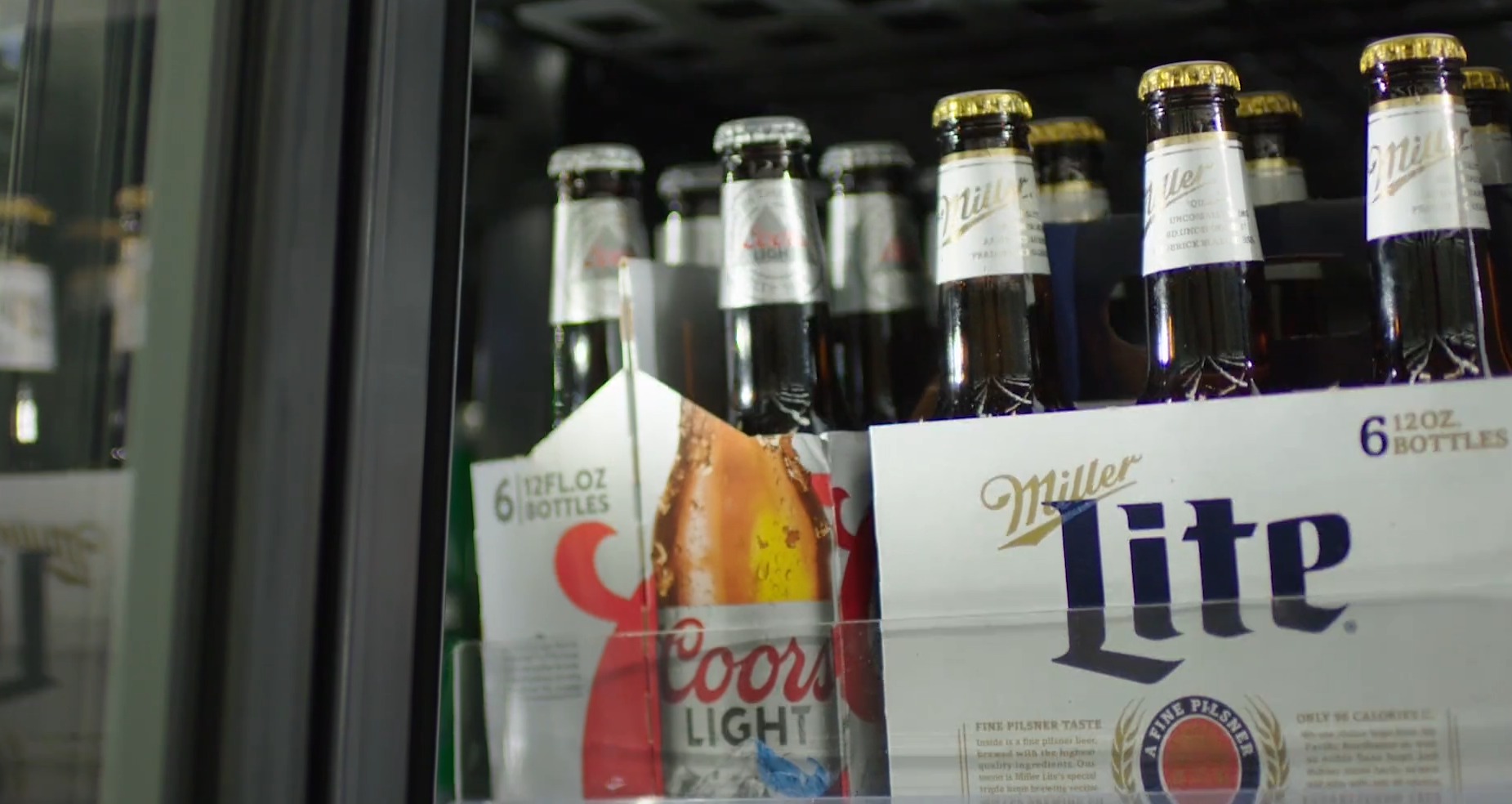The hard seltzer phenomenon rightly has retailers reevaluating their product mix and displays. It would be foolish to ignore the rapid growth of the segment and an expanding base of drinkers who collectively have made hard seltzers a staple in their refrigerators.
And while retailers might be inclined to go all in on hard seltzer at the expense of premium light beer, the two segments actually work together to grow sales, says Russell Fowler, Molson Coors’ senior manager for category solutions.
“When you look at volume, premium light is much larger than hard seltzer, but it doesn’t have the same growth, and that’s where retailers get hung up,” he says. “Hard seltzer is important, but they shouldn’t take their eyes off premium lights, like Coors Light and Miller Lite. It’s not an either/or situation. They complement each other when it comes to sales.”
A Molson Coors analysis of IRI data found premium light beer ranks No. 1 in consumers’ spend per trip, annual spend per buyer, and contribution to incremental sales through feature and display. And with three out of four consumers shopping across segments, retailers have a massive sales opportunity when they stock plenty of hard seltzers and premium lights.
Yet, when it comes to the displays, retailers are missing out when they deprioritize premium lights, according to the comprehensive Molson Coors analysis, which used a variety of IRI reporting, including all-outlet and convenience data, point-of-sale data and shopper data from 2020 and 2021.
Hard seltzers make up some 21% of in-store displays yet account for just 10% of beer sales. That’s while large packs of premium lights receive just 10% of in-store displays, yet account for 13% of beer sales. Additionally, premium lights far outperform hard seltzers on display.
“It’s beer math: if you give premium lights (their) fair share (of display space), there’s a $58 million opportunity there,” Fowler says.
In sum, retailers have a $41 million opportunity for premium light large packs and a $17 million opportunity for premium light small packs, according to the Molson Coors analysis.
‘A hard seltzer world’
Simply put, “it’s a hard seltzer world,” says Donn Bichsel, founder of Chicago-based beer industry consultancy 3 Tier Beverages. He likens seltzer’s display dominance to when craft beer became a hot retail commodity in the mid-aughts.
Yet then, as now, premium lights were the category workhorse whose presence shrunk as retailers chased the hot new thing. And the category continues to deliver.
“There’s not a premium light problem,” Fowler says.
Giving hard seltzers so much display space could have unintended consequences, Bichsel says.
“You’re sacrificing volume and dollar opportunities by overemphasizing seltzer and FMBs over what is really driving business overall, which (are premium lights),” he says.
Still, it’s easy to understand the allure of hard seltzers, which continue to dominate the beer category when it comes to growth.
Not down for the count
“It is impossible to ignore the impact that hard seltzer’s rise to prominence over the past few years has had on the light lager category,” says Liz Paquette, head of consumer insights at e-commerce platform Drizly, where hard seltzer reigns as the top-selling beer subcategory.
Still, a recent report from Drizly found that despite declining share, light lagers are holding their own, and in fact successfully coexist with hard seltzer: “In 2021 to date, share levels show signs of a potential recovery for light lager, with May 2021 share (20 percent) already surpassing 2020 highs,” the report found.
Not only can they coexist, but they can also support each other, Fowler says. In fact, hard seltzer drinkers are likely to also purchase premium light beer, Molson Coors’ analysis found.
“Hard seltzers are great for the category because they’re bringing in new drinkers. People who weren’t buying beer before are buying hard seltzer. A lot of people who are buying beer are buying hard seltzer,” he says. To wit: Just 0.2% of hard seltzer drinkers consume it exclusively, Fowler says.
While hard seltzers have duly won a prominent spot in the beer aisle, their growth is slowing – albeit still in the double digits. Nonetheless, retailers should understand the perils of turning away from premium lights, , the reigning workhorse in the beer industry, Bichsel says.
“I think retailers need to remember these are the drivers of business into their stores,” he says. “Instead of looking at one aspect of their portfolio, it’s a good time to look at their numbers and not get overspaced in one category or another.”
There’s a misconception among retailers, according to Fowler, that consumers aren’t willing to purchase across segments, so it’s best to bet on hard seltzer. In fact, data show, nearly three out of four shoppers purchase across segments.
The reality, Fowler says, “you can – and should – do both and increase total basket size.”

